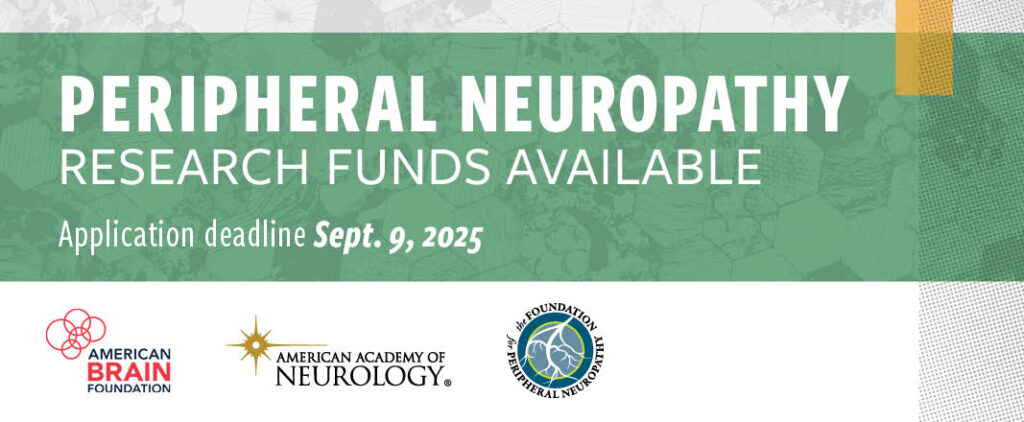Newly Funded Research: A Novel miR-155 Therapy for the Treatment of Peripheral Neuropathy
Principal Investigator Shailly Jariwala, MS, PhD, of the Henry M. Jackson Foundation, was recently granted a Discovery Award totaling USD$319,151 for her research on a new therapy for peripheral neuropathy.
Peripheral Neuropathy Advocacy
Jariwala’s award was made possible through the Foundation for Peripheral Neuropathy’s (FPN) advocacy efforts with the Department of Defense’s CDMRP program. Advocacy and public policy work are important for advancing research into finding new treatments and, ultimately, cures for peripheral neuropathy. Led by FPN, new research studies underway are a direct result of the nationwide advocacy of the PN community.
In the third year for peripheral neuropathy (PN) eligibility, Jariwala’s award was one of three applications that received funding, totaling approximately USD$3.3 million for PN grants.
Study summary
Peripheral neuropathy affects millions worldwide, causing chronic pain and reducing quality of life. It is estimated that 2.4% of the world population suffers from PN. Current treatments often involve opioids, leading to abuse and addiction.
In this study, researchers will explore a new approach using microRNAs, specifically miR-155, to target inflammation, a key factor in neuropathic pain. MiR-155 inhibitors have shown promise in restoring the expression of SOCS1, a gene suppressed in nerve injuries, thereby reducing inflammation and pain.
The study aims to test these inhibitors in animal models to evaluate their effectiveness. If successful, this could lead to a novel therapy for neuropathy, potentially improving the lives of many and offering hope for other neurodegenerative disorders.
miR-155 Therapy
Micro Ribonucleic acids (miRNAs) are small non-coding RNA molecules, expressed by eukaryotic cells, that regulate gene expression. MiRNAs regulate gene expression by binding to their target messenger RNAs (mRNAs) which may lead to repression, translation or degradation of the target mRNA. A single miRNA can bind to multiple mRNAs and can regulate protein expression of multiple genes, thereby regulating many cellular pathways together. MiR-155 is a highly conserved mammalian miRNA that is considered a master regulator of inflammation. MiR155 regulates the inflammatory cascades by regulating the expression of the suppressor of cytokine signaling 1 (SOCS1) gene. Therefore, higher levels of miR-155 will lead to more SOCS1 suppression and increased inflammation. SOCS1 has been shown to be downregulated in the spinal cord after an injury that was associated with increased neuropathic pain.
Additionally, peripheral inflammation and neuropathic pain are also associated with higher inflammation, which has been attributed to increased pain. Studies have shown that miR-155-based inhibition of SOCS1 can greatly enhance the expression of SOCS1 expression, which results in a significant reduction in pain. In addition to SOCS1, miR-155 is known to regulate several other genes that contribute towards inflammation such as Serum and glucocorticoid-regulated protein kinase 3 (SGK3) and sirtuins 1. These molecules collectively control the inflammatory response in the peripheral system and inhibition of miR-155 has been attributed to increased expression of these genes and reduced inflammation.
Hypothesis
Jariwala hypothesizes that injury to peripheral nerves will cause inflammation due to reduced SOCS1 expression and targeting miR-155 will restore the SOCS1 which will reduce peripheral inflammation and neuropathic pain.
The proposed study will test miR-155 inhibitors as a possible therapeutic strategy for treating neuropathic pain. To test this hypothesis, Jariwala’s team proposes the following aims.
- Aim 1: Evaluate the dose response of administering lipid nanoparticle encapsulated miR-155 inhibitors on expression of SOCS1 in control animals.
- Aim 2: Evaluate the effect of miR-155 inhibitors on reduction of pain in a rat model of spared nerve injury (SNI).
Outcome
Completion of the proposed studies will provide a potentially novel therapeutic approach to minimize the neurodegenerative morbidity and pain associated with peripheral nerve injury. The data generated from this study can be directly used for further detailed pre-clinical investigations. Additionally, since miR155 inhibitors have demonstrated to be safe during phase1 trials for other indications, successful preclinical studies could expedite their transition to human trials. Furthermore, these results can be applied to develop new therapies for other neurodegenerative disorders in addition to PN.







